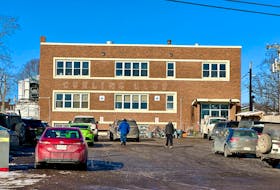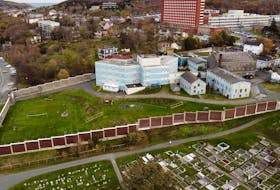LABRADOR, N.L. — Most folks from most any part of Labrador are familiar this time of year with fireweed. This resilient plant dots the landscape throughout most parts of Labrador.
Fireweed is usually associated with being the first plant to return to an area where a fire has burned patches of land or where any tree harvesting activities have occurred. This plant prefers to have an early and wet start with an exposure to very sunny conditions. It is a familiar plant to us all and gives a plentiful presence along the roadside and the edges of the trees where bogs start and in open and exposed areas.

The most defining presence of fireweed is its bold pink and purple colours. They grow in a spike shape with flowers that have four petals and will from time to time create secondary branches of flowers that give the plant an even greater and expanded appearance.
Their flowers begin to bloom first on the lower part of the stem and work their way up the plant toward the top of the plant as the season goes on. Based on the timing of their flowers blooming, it sends a mixed message to all who see it. The plants start their blooming during the height of the summer and by the time the flowers have reached the top of the plant in their full bloom, the bitter sweet reality is that the best part of our summer has came and went.
Fireweed fruits which they produce are long and narrow, They split open on maturity and release hundreds of seeds that are scattered by the winds as white feather like tufts. They are distributed by the breezes and land many times together in close proximity creating new plants in large patches that we so often see.
Some folks harvest parts of this plant as it offers something useful from the various stages it goes through during its growing season. The early shoots can be eaten raw or lightly cooked. These shoots are harvested when the leaves are close to the stem and are pointing upward. Although these young leaves can be pinched off and eaten, with maturity, they become fibrous and bitter tasting. The flowered buds early in the season can also make a tasty and colourful addition to a salad.
The leaves have historical been harvested as soon as the plant flowers for making tea. The leaves are dried in baskets or paper bags and then stored in jars. They produce a tea that gives a berry, citrus flavour.
Fireweed has historically been used as a remedy in helping with many ailments. Allergies and irritable bowel like symptoms, and intestinal imbalances have been improved with the use of this plant from its tea.
Early fur traders and pioneers used fireweed tea as a remedy for sore throats and lung congestion. Nature has always provided us with healing agents for many afflictions. I guess we shouldn’t be surprised that fireweed also holds some good as well.
Whether or not people use the ever present fireweed as a healing agent for ailments or not, this beautiful little plant can be seen throughout most parts of the Big Land.
It’s good to see and is an ever-present component that gives the incredible diversity that is all part of the beauty of the wilds of Labrador.









